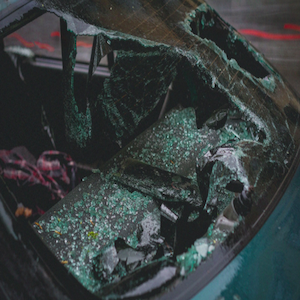Getting into an Auto Accident can be a traumatic experience even without the added anxiety of all the legal and financial matters that come after – that’s why every driver must stay up to date with steps to follow if they ever find themselves in this situation.
Today, we’ll be walking you through a step-by-step process to ensure that you’re prepared to keep your physical, emotional, financial, and legal matters in the best position possible following this experience.
1) Assess Injuries & Get The Appropriate Help
Your number one priority in any type of accident should be the well being of you and everyone involved. Make sure to assess your injuries, any passengers in the car with you, and the state of the individuals in other vehicles – if it wasn’t a single-car collision.
If you suspect any of the individuals require medical attention call 911 or the emergency equivalent in your area, immediately.
You may have minor injuries that you believe do not require medical attention, but remember to use your best judgment.
If there are injuries from the accident you will be able to later fill out a personal injury claim.
For this, you should have ample evidence along with you. There are plenty of other things to have a legit claim filed in court. For all of this, you would need to hire an injury lawyer at first. All information regarding this is detailed here to help you get a deserving claim. The success of your case depends on your lawyer’s credibility so choose wisely.
A personal injury claim is used for injuries you’re suffering from only if the fault of the injuries lies elsewhere. In other words – if the other party is the only one who is legally responsible for the accident. Here are some helpful tips on the personal injury claim process. They’ll be useful for claiming any minor or major injuries you, or anyone in your vehicle may have suffered:
- Gather Evidence of the Injury and Accident
- Make sure you’re able to recount the events leading to the injury accurately
- Hire a reliable lawyer
- Make sure you fully understand the paperwork that comes along with the claim
2) Assess The Damage
Once you’ve deduced that there aren’t any medical emergencies, it’s time to assess the damage. Take photos and videos of both your car and any other vehicle involved in the collision. For issuance purposes, make sure to calmly socialize with the other drivers involved so you are able to exchange information.
Generally, if the damage is more than $2000 the police will need to be called, no matter the extent of injury to those involved. If the cost seems to be below that limit only a collision reporting center will need to be notified.
The damage minimum and maximums may vary where you are located so make sure to check the exact protocol for your city or town.

3) Scene Cleanup
Even in a minor accident, the cleanup can be extensive – that’s why it’s important to remove your car from the scene if the authorities involved have given you the okay.
If no authorities are needed make sure to move your car to the side of the road simply so as not to build up traffic. In most cases, a collision reporting center will be able to send in the right professionals in order to clean up the rest of the scene.
If your accident has taken place on a main road or interstate, be sure to express extra caution when it comes to the ongoing traffic.
There, of course, may be certain circumstances where you’re unable to move your vehicle. If this happens make sure to of course stay calm, but also turn off your engine and turn on your hazard lights. This will warn oncoming traffic to slow down as they approach the collision sight.
4) Call Your Insurance Company
You might be thinking that after the scene has been cleared and information exchanged that you’ve done all you can – but there’s more. It’s important to give your Insurance Company a call within 24hrs of the collision.
You’ve exchanged your insurance information with the other drivers involved which means your insurer will likely have been notified of the collision already.
Your provider will help with any damage costs from the other car you may be liable for as well as help you get the coverage you need to cover the damage on your vehicle.
Be Cautious
All in all, it’s important to be cautious while driving but also while dealing with the after-effects of an accident. While this step by step checklist is definitely a good start, it’s important to always know the protocols for the area you’re driving in.
Remember – everyone’s physical well being comes first. Legal matters and the coverage of damage costs can be dealt with later. Drive safe!




